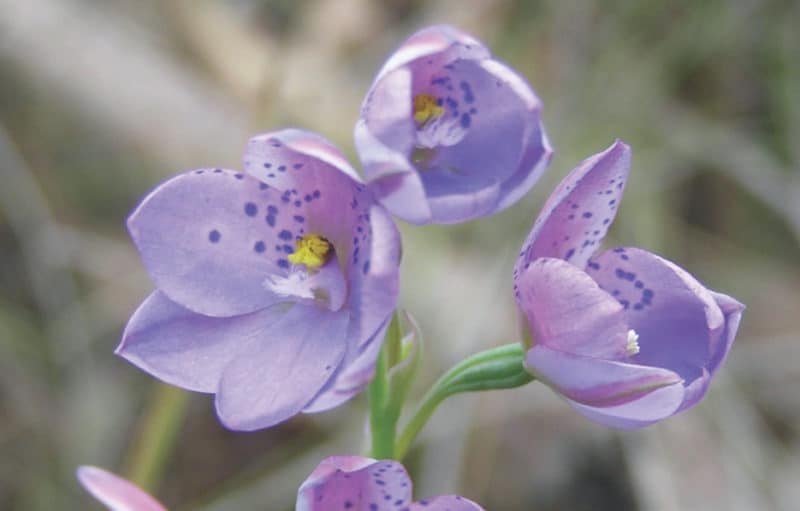PARK WATCH March 2019 |
Much has been learnt, and there’s more learning to do, says Phil Ingamells.
A few hundred metres up a seldom-walked track through Kinglake National Park, a stone seat stands as a small memorial to four people in the nearby Steels Creek community who fell victim to the terrible fire of Black Saturday, 7 February 2009, as well as to all others who lost their lives that day.
The four people commemorated were well known to the nature conservation community: VNPA staffer Jenny Barnett, her animal welfare advocate husband John, and their biologist neighbours Leigh and Charmian Ahern.
Ironically, Jenny was the VNPA’s long-standing advocate for improved management of fire – management that might better protect both people and the environment. Nature, it seems, can callously discard those who love her.
There were hundreds of fires across Victoria on Black Saturday, and most were contained by courageous staff and volunteer firefighters. But some roared far beyond control through 450,000 hectares of tinder dry grass and bushland, killing 173 people and destroying over 2,000 houses. The economic cost was more than $4 billion.
It was Australia’s greatest bushfire tragedy, and it left deeply scarred communities in its wake. No one wants to see that day repeated.
Before Black Saturday, Victoria had been considered one of the most effective fire managers in the globe, but the terrible losses forced a rethink, and that thinking continues, as it should, today.
The state government soon set up the Victorian Bushfires Royal Commission with an open mandate to investigate all aspects of that day, and of fire management in the state generally. Through the 17 months of the commission’s considerations, it received around 1,700 public submissions and advice from a series of experts on all aspects of fire behaviour and management. Each of the 155 public hearing days began with personal testimony from a victim, lest the commission lose sight of its overriding objective – protecting human life.
But the commission also had an eye for the protection of nature. The great conundrum, of course, is that a bushfire’s fuel is also our natural heritage.
The Commission’s 67 final recommendations have largely been implemented and have significantly changed fire management in Victoria, and elsewhere (see next page).
However, the commissioners made it clear that many of their findings were provisional, and that our management effectiveness should grow in line with any new knowledge.
They called for ongoing monitoring and research into most aspects of fire management, and specifically on the effectiveness of fuel reduction programs and the impact of planned and wild fire on the state’s biodiversity.
In Jenny Barnett’s submission to an earlier parliamentary inquiry into fire in Victoria, she noted that a series of loose and inaccurate references to scientific papers had been used to justify a large planned burn target.
She also made some observations that are yet to gain broad management acceptance, even though a number of recently published research papers back her up.
She called for research into the probability that frequent fire could encourage the return of plants that responded well to fire, plants that would most likely have evolved to be more flammable, thus actually increasing the fire risk over time.
She also demonstrated that while fuel reduction burns can often help protection of lives and assets, in other instances they can be counterproductive, changing long-unburnt vegetation with a quite sparse understorey into areas thick with shrub growth. It is now well recognized that fuel reduction programs are generally only effective for three or four years, but little monitoring is done to assess the short or long-term effects of burns in different ecosystems.
Fire management is complex, and we need to listen to many voices. Aboriginal burning practices will be increasingly studied and experimentally applied in the years ahead. Our environment department has commissioned a great deal of research, following the commission’s recommendations, but is yet to significantly apply that information to management. Many universities, and the Bushfire and Natural Hazards Cooperative Research Centre (CRC), have also been conducting research, but much of that fails to penetrate the environment department’s administrative walls.
We have become skilled at handling fire in Victoria, and we could become very clever indeed, but we must continue to act on knowledge gained.
The memorial stone seat in Kinglake National Park was designed as a time capsule. Some of Jenny’s fire submissions are among the memorabilia there. My guess is they will stand the test of time.
More
Read:
The Victorian Bushfires Royal Commission made 67 recommendations. Some have been fully implemented, others have been carefully revised, and a few have been largely ignored. The areas where the commission called for action are summarised in ‘Black Saturday – How things have changed‘, Park Watch March 2019.
Read about the impacts on and recovery of Victoria’s mountain ash forests in ‘Black Saturday – Forests after the fires‘, Park Watch March 2019.
Did you like reading this article? Want to be kept up to date about nature issues in Victoria? Subscribe to our email updates.
You can also receive our print magazine Park Watch four times a year by becoming a member. Find out more here.
